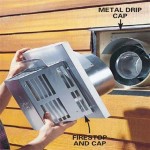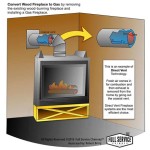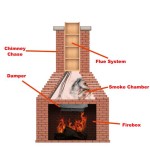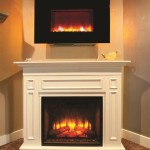Tile For Fireplace Hearths: A Comprehensive Guide
A fireplace hearth serves as a critical safety component, protecting the surrounding flooring and combustible materials from the heat and sparks generated by a fire. The hearth also enhances the aesthetic appeal of the fireplace, contributing to the overall ambiance of the room. Choosing the right material for a fireplace hearth is therefore a decision that balances functionality, safety, and design. Tile is a popular choice for fireplace hearths, offering a wide range of styles, materials, and performance characteristics.
This guide provides an in-depth look at the various aspects of using tile for fireplace hearths, covering different tile materials, factors to consider when selecting tile, installation details, and maintenance tips. The information presented aims to equip readers with the knowledge necessary to make informed decisions about their fireplace hearth projects.
Key Considerations When Choosing Tile for a Fireplace Hearth
Several factors influence the suitability of a particular tile for use as a fireplace hearth. These include heat resistance, durability, aesthetics, and compliance with local building codes. Each factor plays a crucial role in ensuring both the safety and the longevity of the hearth.
Heat Resistance
One of the most important considerations is the tile's ability to withstand high temperatures. Fireplace hearths are exposed to direct heat from the fire, and the tile must be able to handle this without cracking, warping, or discoloring. Different tile materials have varying levels of heat resistance. Porcelain and stone tiles are generally considered to be the most heat-resistant options whereas some decorative tiles may have coatings that are vulnerable to high heat. It's advisable to review the tile's specifications provided by the manufacturer to ensure it meets the required heat resistance for fireplace applications. A tile's heat resistance is also closely correlated to its density and porosity. Denser, less porous tiles will resist heat transfer and expansion more effectively than porous varieties.
The type of fireplace also influences heat considerations. Wood-burning fireplaces tend to generate hotter temperatures than gas fireplaces. Consequently, hearth tiles for wood-burning fireplaces must possess a higher heat resistance. For gas fireplaces, the heat output is more controlled and predictable, which may allow for a broader selection of tile materials. It is always better to err on the side of caution when considering the heat rating.
Durability and Maintenance
Durability is another critical factor, as the hearth is subject to foot traffic, dropped objects, and the weight of fireplace accessories. The tile must be strong enough to withstand these stresses without chipping, scratching, or breaking. Porcelain and some natural stone tiles are known for their durability. The surface finish should also be durable and resistant to staining from ash, soot, or spills. A glazed finish can offer increased stain resistance and ease of cleaning. Regular cleaning of the tile is essential to maintain its appearance and prevent buildup of soot and debris.
The grout used between the tiles also plays a role in the hearth's durability and maintenance. Epoxy grout is a popular choice due to its stain resistance and impermeability. Traditional cement-based grout requires sealing to prevent staining and water penetration. The grout lines should be cleaned regularly to prevent grime buildup, which can be accomplished using specialized grout cleaners or a solution of baking soda and water.
Aesthetics and Design
The visual appeal of the tile is also a significant consideration. The hearth is a focal point in the room, and the tile should complement the overall décor. Tiles come in a wide variety of colors, patterns, sizes, and textures. Natural stone tiles offer a timeless and elegant look, while porcelain tiles can mimic the appearance of natural stone or other materials, providing greater design flexibility. The choice of tile will depend on the desired style and the existing aesthetic of the room. Large format tiles minimize grout lines and can create a more modern and seamless look. Smaller tiles can provide a more intricate and detailed design.
The color of the tile should also be carefully considered. Darker colors tend to conceal soot and ash better than lighter colors. However, lighter colors can brighten up a room and create a more open and airy feel. The texture of the tile can also impact its appearance and functionality. Textured tiles can provide a better grip and prevent slipping, but they can also be more difficult to clean. Smooth tiles are easier to clean but may be more slippery, especially when wet.
Compliance with Building Codes
Local building codes and regulations often specify requirements for fireplace hearths, including minimum dimensions and material specifications. Before selecting a tile, it is crucial to verify that it meets the requirements of the local building code. Failure to comply with these regulations can result in fines or the need to redo the installation. Building codes typically address the size of the hearth extension beyond the firebox opening, the use of non-combustible materials, and the proper installation of the hearth. A local building inspector can provide detailed information on the specific requirements in your area.
Types of Tile Suitable for Fireplace Hearths
Various types of tile are suitable for fireplace hearths, each with its own advantages and disadvantages. Porcelain, ceramic, and natural stone tiles are the most common choices. Understanding the properties of each type of tile is essential for making an informed decision.
Porcelain Tile
Porcelain tile is a popular choice for fireplace hearths due to its durability, heat resistance, and low porosity. Porcelain tiles are manufactured at high temperatures, resulting in a dense and strong material. They are highly resistant to cracking, chipping, and staining. Porcelain tiles are available in a wide range of colors, patterns, and sizes, including options that mimic the appearance of natural stone, wood, or concrete. This versatility makes them a suitable choice for various design styles. Porcelain tiles are also relatively easy to clean and maintain, making them a practical option for fireplace hearths. Their density also means they are less prone to moisture absorption than other types of tile.
When selecting porcelain tile, it is important to choose a tile that is rated for use on floors, as this indicates that it is strong enough to withstand foot traffic and the weight of fireplace accessories. The Porcelain Enamel Institute (PEI) rating system provides a measure of abrasion resistance, with higher ratings indicating greater durability. A PEI rating of 3 or higher is generally recommended for fireplace hearths.
Natural Stone Tile
Natural stone tiles, such as granite, slate, marble, and travertine, offer a timeless and elegant look for fireplace hearths. Natural stone is known for its unique variations in color and texture, which can add character and visual interest to a room. Granite is particularly durable and heat-resistant, making it an excellent choice for wood-burning fireplaces. Slate is also a good option, offering a rustic and textured appearance. Marble is a more luxurious choice, but it is also more porous and susceptible to staining. Travertine has a distinctive porous texture and requires sealing to prevent water penetration and staining.
When selecting natural stone tiles, it is important to consider the porosity of the stone and choose a sealant that is appropriate for the specific type of stone. Sealing the stone will help to protect it from staining and water damage. Natural stone tiles can be more expensive than porcelain or ceramic tiles, but their durability and aesthetic appeal make them a worthwhile investment. Regular cleaning and maintenance are essential to preserve the natural beauty of stone tiles.
Ceramic Tile
Ceramic tile is another option for fireplace hearths, although it is generally less durable and heat-resistant than porcelain or natural stone. Ceramic tiles are made from clay and fired at lower temperatures than porcelain tiles, resulting in a less dense material. Ceramic tiles are available in a wide range of colors, patterns, and sizes, and they are typically less expensive than porcelain or natural stone. However, ceramic tiles are more prone to cracking, chipping, and staining. They are also more porous than porcelain tiles, which means they are more susceptible to water damage. If using ceramic tile, ensure it is rated for floor use and consider the heat output of the fireplace. Ceramic tiles also tend to expand and contract more than other choices when subjected to heat.
When using ceramic tile for a fireplace hearth, it is important to choose a tile that is rated for floor use and to seal the grout lines to prevent water penetration. Ceramic tiles are best suited for gas fireplaces, where the heat output is more controlled and predictable. Regular cleaning and maintenance are essential to prevent staining and damage.
Installation and Maintenance of Tile Fireplace Hearths
Proper installation and maintenance are crucial for ensuring the longevity and safety of a tile fireplace hearth. The installation process involves preparing the subfloor, applying mortar, setting the tiles, and grouting the joints. Regular maintenance includes cleaning the tiles and grout lines and resealing the grout as needed.
Installation Process
The first step in installing a tile fireplace hearth is to prepare the subfloor. The subfloor should be level, clean, and structurally sound. If the subfloor is uneven, it may need to be leveled with a self-leveling compound. Any loose debris or paint should be removed from the subfloor. A cement backer board is often recommended as a substrate for tile hearths, providing a stable and water-resistant surface. The backer board should be screwed or nailed to the subfloor at regular intervals.
Once the subfloor is prepared, a layer of mortar is applied using a notched trowel. The mortar should be spread evenly over the subfloor, and the tiles should be set into the mortar with a slight twisting motion. Spacers should be used to maintain consistent grout lines between the tiles. After the tiles are set, they should be allowed to cure for at least 24 hours before grouting. Grout is then applied to fill the joints between the tiles. The grout should be pressed into the joints using a grout float, and any excess grout should be wiped away with a damp sponge. After the grout has dried, it should be sealed to prevent staining and water penetration.
Maintenance Tips
Regular cleaning is essential for maintaining the appearance and longevity of a tile fireplace hearth. The tiles should be cleaned regularly with a mild detergent and water. Avoid using harsh chemicals or abrasive cleaners, as these can damage the tile or grout. The grout lines should be cleaned regularly with a grout brush or a specialized grout cleaner. Baking soda and water can also be used to clean grout lines. Resealing the grout lines every 1-2 years is recommended to prevent staining and water penetration.
Spills and stains should be cleaned up immediately to prevent them from setting into the tile or grout. Soot and ash can be removed with a vacuum cleaner or a damp cloth. Regular inspection of the hearth is important to identify any cracks, chips, or other damage. Any damage should be repaired promptly to prevent further deterioration.

Fireplaces Renditions Tiles
:strip_icc()/101343186-8909e34a95d74e0087ce39e27577ca41.jpg?strip=all)
How To Tile A Fireplace Hearth

How To Tile A Fireplace Surround And Hearth Build Basic

Fireplaces Renditions Tiles

How To Tile A Fireplace My Uncommon Slice Of Suburbia

Tile Inspiration For Fireplaces And Hearths The Otto House

How To Tile Over A Brick Hearth Shine Your Light

Fireplace Update With L Stick Tiles Field Court
/102661017-6a23c040b71843379188b96b21ac1a08.jpg?strip=all)
How To Tile A Fireplace

Operation Hearth Re Tile Grouted Goodness Fireplace Tiles Home Remodel
Related Posts








